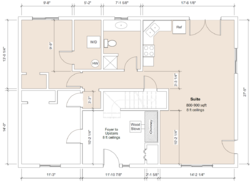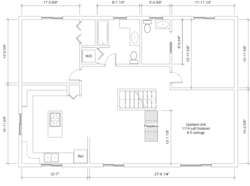Hi,
I could use some recommendation on wood stove size. I'm on Vancouver Island, and trying to squeeze in before the 2020 regulations. I have a choice between a Napoleon S4 and S9, but I'm not sure which to choose. The stove will sit in a 12'x12' foyer with a short staircase going up to 1200sqft. The lower floor will potentially be opened to a full 2300 sqft size when the two units are joined back together. House has some batt insulation in the exterior walls and attic, and is slab on grade construction.
I'll be burning 95+% Douglas Fir, in a supposedly temperate climate. It doesn't get much colder than 15F or -10C, and usually hovers at the freezing mark. I don't want an oversized stove for the house, but the foyer is a perfect sacrificial space which could be too hot for comfort, but all the heat rising to an open upstairs.
Will an 85000 BTU stove be too big? Should I go with a 70000 BTU stove instead? To what extent will the heat be conducted through interior walls and absorbed by the chimney stack? How honest are the manufacturer specs, or are they overstated?
Thanks in advance for the help.
I could use some recommendation on wood stove size. I'm on Vancouver Island, and trying to squeeze in before the 2020 regulations. I have a choice between a Napoleon S4 and S9, but I'm not sure which to choose. The stove will sit in a 12'x12' foyer with a short staircase going up to 1200sqft. The lower floor will potentially be opened to a full 2300 sqft size when the two units are joined back together. House has some batt insulation in the exterior walls and attic, and is slab on grade construction.
I'll be burning 95+% Douglas Fir, in a supposedly temperate climate. It doesn't get much colder than 15F or -10C, and usually hovers at the freezing mark. I don't want an oversized stove for the house, but the foyer is a perfect sacrificial space which could be too hot for comfort, but all the heat rising to an open upstairs.
Will an 85000 BTU stove be too big? Should I go with a 70000 BTU stove instead? To what extent will the heat be conducted through interior walls and absorbed by the chimney stack? How honest are the manufacturer specs, or are they overstated?
Thanks in advance for the help.



